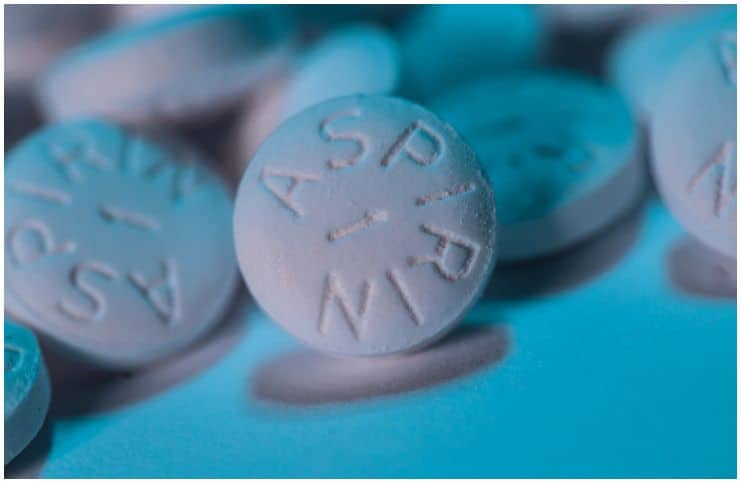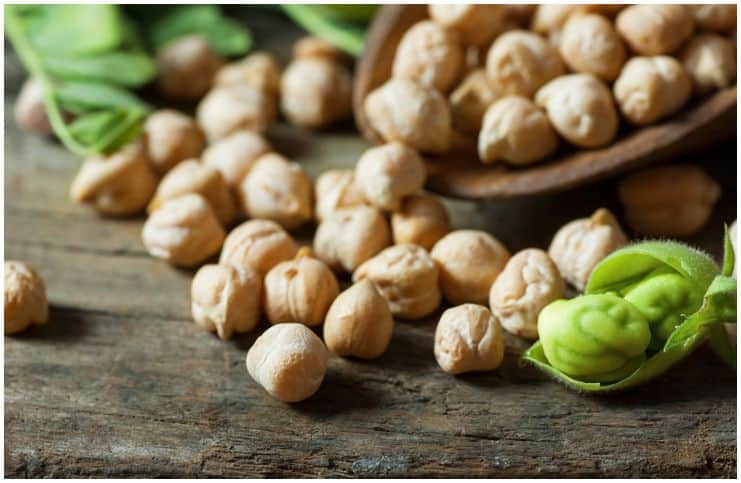Foods High In Salicylates + What is Salicylate (aspirin) Intolerance/Sensitivity?
Salicylate intolerance, also known as salicylate sensitivity, is any side effect that occurs when an amount of salicylate is ingested.
Salicylates are compounds that occur naturally in many fruits and vegetables, they’re a type of natural pesticide to protect plants against insects, harmful bacteria, diseases, and fungi.
They are mostly found in the skin zone and just under the skin of the plant, and the lowest concentration is when the fruit is ripe.
A small portion of the population may be sensitive to these chemicals, much in the same way one may be sensitive to food (for instance, gluten or lactose). This intolerance is more likely to occur in individuals with moderate to severe asthma or chronic rhinosinusitis (CRS).
Since salicylates build up over time, they have a cumulative effect on the physical body, so after excessive intake, a sensitive person to this chemical may experience a reaction.
Salicylate (aspirin) intolerance symptoms:
- itchy, sore, puffy, or burning eyes;
- hyperacusis, tinnitus, or hearing loss;
- migraines or headaches;
- changes in skin color, itching, rash, or hives;
- joint pain, stiffness, and swelling;
- gall bladder problems;
- low/high blood pressure;
- irritable bowel symptoms (diarrhea and/or constipation);
- poor concentration and memory loss;
- nasal congestion, sinusitis, post-nasal drip, runny nose, sneezing;
- a persistent cough;
- anger for no apparent reason;
- behavior problems, poor attention span, ADD, ADHD (more common in children’s reactions);
- chronic fatigue syndrome;
- stomach pain and upset stomach;
- depression, anxiety, panic attacks.
Note
For people diagnosed with Reyes syndrome (a rare but serious condition that causes swelling in the brain and liver), it could be problematic to consume/use products with salicylic acid.
If you have been experiencing any of the above symptoms and are unable to explain the true cause, an elimination diet can help you determine if this chemical is to blame.
Furthermore, if you’ve determined you do have salicylate intolerance, a registered dietician may be helpful to determine a long-term diet consisting of salicylate free foods.
List of foods that are high in salicylates
These chemicals are found in foods from plants: some vegetables, most fruits, spices, herbs, tea, and flavor additives.
The list includes – canned olives, radish, apricot, avocado, mushrooms, cucumbers, eggplant, zucchini, spinach, broccoli, peppers, orange, berries, all dates, prunes, raisins, almonds, sultanas, peanuts, honey, coconut and olive oil, coconut milk, fish, seasoned and processed meats, oregano, peppermint, turmeric, hot pepper, paprika, mustard, tarragon, rosemary, cumin, polenta, all teas, coffee, liquor, rum, wine, sauces, jam, juices, stock cubes, tomato paste, and dried fruit.
Other sources
These compounds are also created synthetically. Drugs that contain salicylates include analgesics (painkillers), muscle relaxants, antacids, cough mixtures, cold and flu medication, and acne lotions.
A popular salicylate drug is aspirin, which has a long history. Aspirin intolerance (more than 10,000 tons of aspirin are consumed in the U.S. each year) was widely known by 1975 when the understanding began to emerge that it is a pharmacological reaction, not an allergy. Aspirin is used as an anti-inflammatory agent for the treatment of joint inflammation and soft tissue and vasculitides such as acute rheumatic fever and Kawasaki disease.
Additionally, medicines that can contain aspirin include:
- some antacids;
- flu and cold remedies;
- drugs used for pain for periods, headache, sinus;
- many alternative and complementary medicines, particularly those used for pain and joint problems;
- medicines used for inflammatory bowel disease;
- teething gels.
These artificial chemicals are also usually found in many skincare, personal care, and preservatives.
The following personal care products may contain them:
- conditioners and shampoos;
- perfumes and fragrances;
- herbal remedies;
- mint-flavored and mouthwash toothpaste;
- cosmetics such as lotions, lipsticks, and skin cleansers;
- tanning or sunscreen lotions;
- shaving cream;
- muscle pain creams.
List of foods that are low in salicylates:
Brussels sprouts, cabbage, cauliflower, scallions, banana, passion fruit, grapes, persimmon, fig, mango, lime, pear, beans, chickpeas, lentils, potato, onion, garlic, chives, cashews, hazelnuts, carob, sugar, salt, cacao, maple syrup, soy oil, sunflower oil, grains (barley, millet, rice, oats, rye, wheat), soy and rice milk, vanilla, tapioca.
How to reduce salicylate intake?
You will need to undertake a low-salicylate diet. In addition, avoid all foods that are artificially colored or preserved and avoid medications and personal care products with salicylic acid. While you are on this diet, you should keep a food diary and record daily what you eat, and whether there is any adverse reaction. If you react, then it is best to avoid that food or product in the future.
Note
Salicylic acid is considered an important beta-hydroxy vitamin, also known as vitamin B11, which provides many different health benefits to the body. The problem is just the dose.
READ THIS NEXT:
7 Foods High in Resistant Starch That You Should Be Eating
Top 10 Vegan YouTubers You Need To Watch
Top 11 Foods Highest in Methionine
References https://www.ncbi.nlm.nih.gov/pmc/articles/PMC2696737/ https://www.ncbi.nlm.nih.gov/pubmed/7098450


I have this and can tell you that grapes are extremely high in salicylates as are a lot of the foods you list as low.